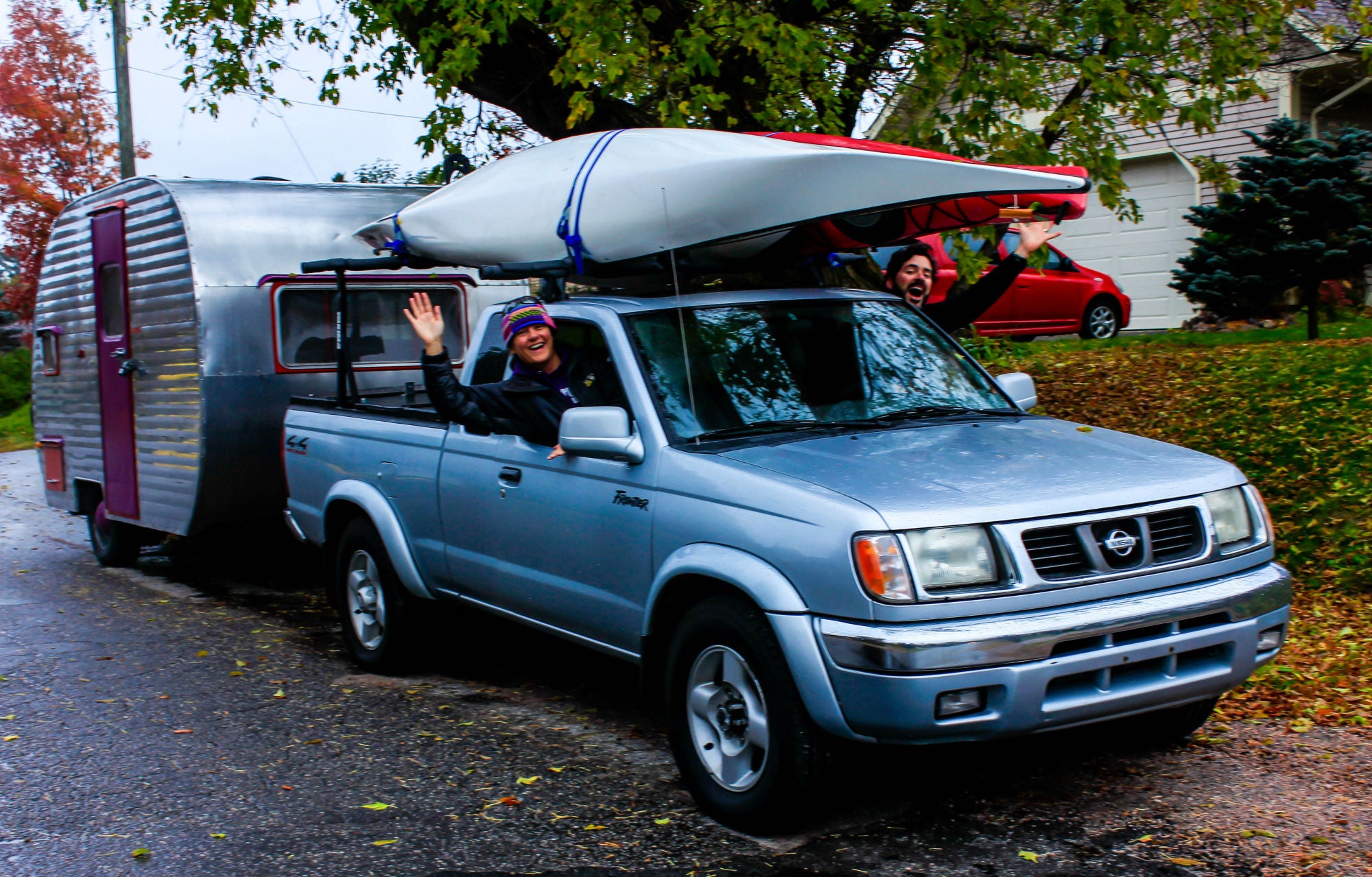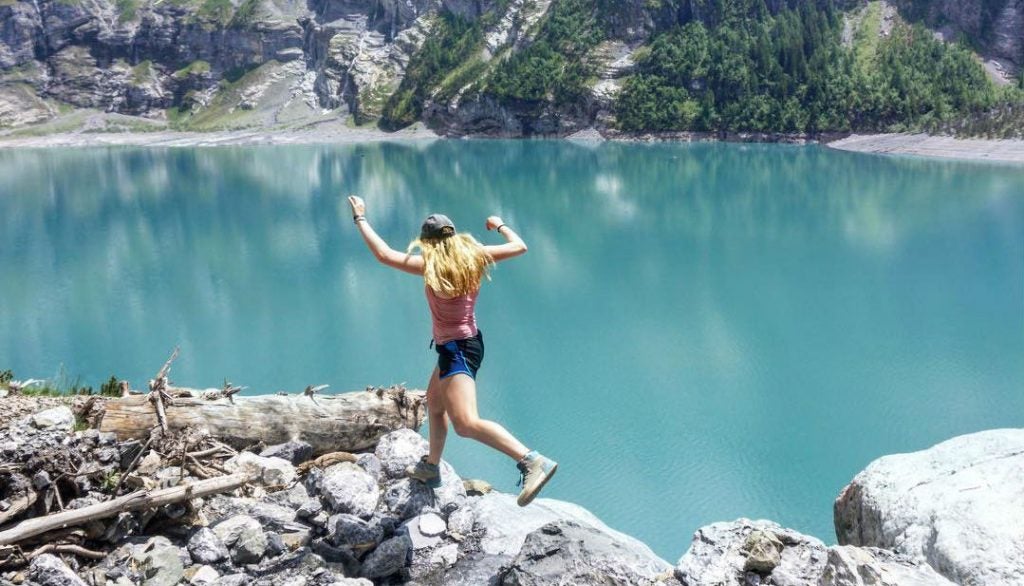Meet Hutch and Shari! They turned a 1957 vintage trailer into 72 square feet of home on the road. These full-time campers travel regularly, camp whole-heartedly, and pack their lives with experiences instead of things.
Ever wondered what it would be like to simplify your life and live in a trailer? Cooking up dinner at campgrounds and calling the country’s most beautiful landscapes your backyard? Hutch and Shari are here to tell you all about it. Come back every Thursday for ten installations of Full-Time Campers with Shari, Hutch, and their vintage trailer, Hamlet.
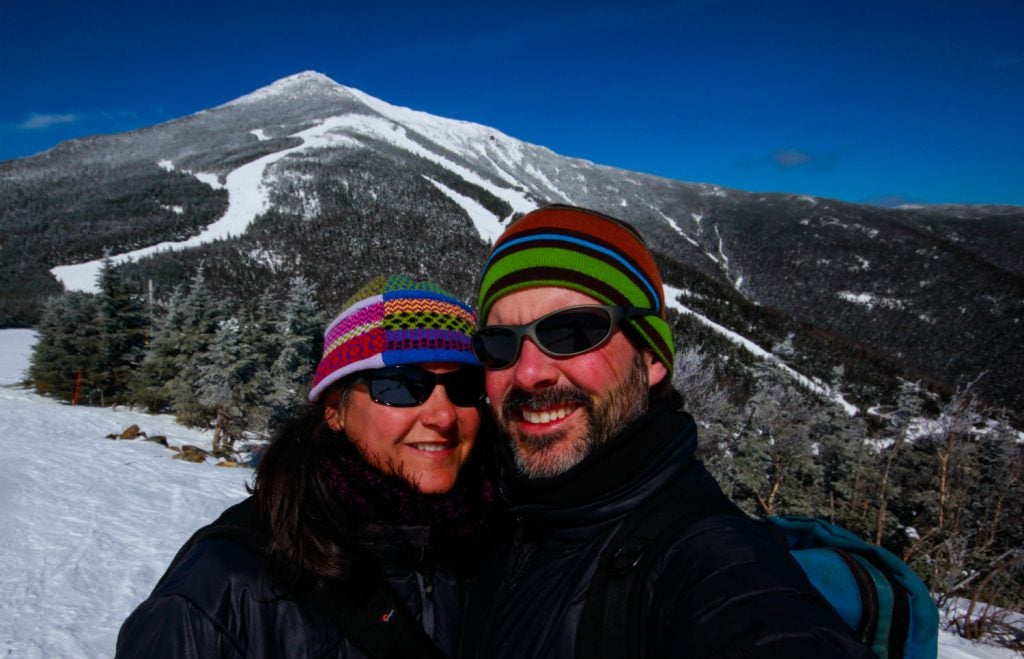
Transitioning from a house to a tiny travel trailer can be incredibly fun, but it can also be overwhelming. Our jobs, our families, and our current homes can all present challenges when making this transition. But once you break it down, it’s a lot more manageable.
After purchasing our little canned ham camper (which we call “Hamlet”), it took us 18 months before we were ready to hit the road. Here are the big things you’ll need to consider as you prepare for the lifestyle of full-time campers.
Set a Launch Date

As Tim Ferriss says, ”Someday is a disease that will take your dreams to the grave with you.”
When Shari bought our trailer on e-Bay, sight unseen,“someday” became a reality. Once this old, musty hunting trailer was parked in our driveway, we needed a renovation plan that was ambitious, without being unrealistic. We made our official launch date 18 months later, which was a significant date to us — our 12th wedding anniversary. This new lifestyle turned out to be one of the best gifts we’d ever given our marriage.
We didn’t have everything figured out when we left, but we trusted ourselves to adapt and learn.
Whatever steps your dream involves, set a timeline to make it happen.
“This new lifestyle turned out to be one of the best gifts we’d ever given our marriage.”
Downsizing Your Life

Getting rid of stuff you don’t need or use can be freeing. But many people struggle with downsizing, and it’s often what stops them from hitting the road, moving into a smaller dwelling, or simply making a major life change.
Remember: You own the stuff, don’t let the stuff own you.
We went from a 1,650 square foot house to a 72 square foot adventure rig with a truck loaded down with outdoor gear.
For Shari, cleaning things out comes easily because she loves getting rid of clutter. I, on the other hand, have a difficult time figuring out where to begin. So Shari took the lead.
I would be in the basement, turning in circles and Shari would focus my energy: “Start with these 3 square feet, and make 5 piles,” she told me. We divided stuff into the following categories: Bring, Store, Donate, Sell, Trash.
Start small and clean out just one closet or cabinet. When you’re finished cleaning out a small space, you’ll feel accomplished. You realize it’s not so hard after-all, and you can move on to the next small space.
If you struggle to let go of material items, keep your eye on the prize: living a simpler, more sustainable life. That’ll keep you motivated. Trust us, it’s like losing 400 pounds — the weight off your mind, body, and soul is worth it!
“If you struggle to let things go of material items, keep your eye on the prize: living a simpler, more sustainable life.”
Most importantly, don’t let this process stress you out. If there’s something you feel particularly attached to but don’t really need, either store it or give it to a loved one. Another option is to spend time with it, take a photo of yourself with the item, then give it to someone who will love it as much as you did.
Donating some of your things to people who really need them will make it even easier to let them go.
Making the Announcement: “I’m Hittin’ the Road!”

Word travels fast in our tight community, so we were both a bit nervous about telling people that we were leaving.
About 4 months before our launch date we told our individual supervisors within the same hour. But even with careful planning, word got out. We couldn’t keep up with the pace of the questions and comments, so we sent out a mass message to friends, colleagues, and students.
Prepare yourself for reactions ranging from, “Wow, you are living my dream!” to, “You’re crazy.” Some people will see your decision as inspiring, while others will see it as a repudiation of their own life choices. Our friends are our biggest fans, and our families…well, they’ve come around. We actually see our families more often than we did prior to breaking away.
Renting or Selling a House
If you own a house, hitting the road can be a little trickier, but you have options!
When we moved in 2012, the real estate market hadn’t recovered enough for us to list our house. So, rather than watch our savings dry up and our house sit empty, we decided to rent it out. There’s a robust rental market in the mountains of North Carolina, so we never had a problem finding renters.
Being a remote landlord is not without downsides, but it mostly worked out.
You have to be willing to repair damage and hound folks for rent at times. If we did it again, we might have hired a reputable property management company to handle the business end; but we were focused on saving money. If you do go with a property management company, be sure to shop around and look for referrals. The company you choose can make all the difference.
Selling can be a better option for those who know they don’t want to return to their property and they can get what they need out of their investment.
By 2015, we decided to sell. It took 10 nerve-wracking months, and some awesome real estate agents, but we finally sold in 2016. When we got the closing check, we felt like the last little string to our old way of life was cut! We were truly free.
Getting Connected
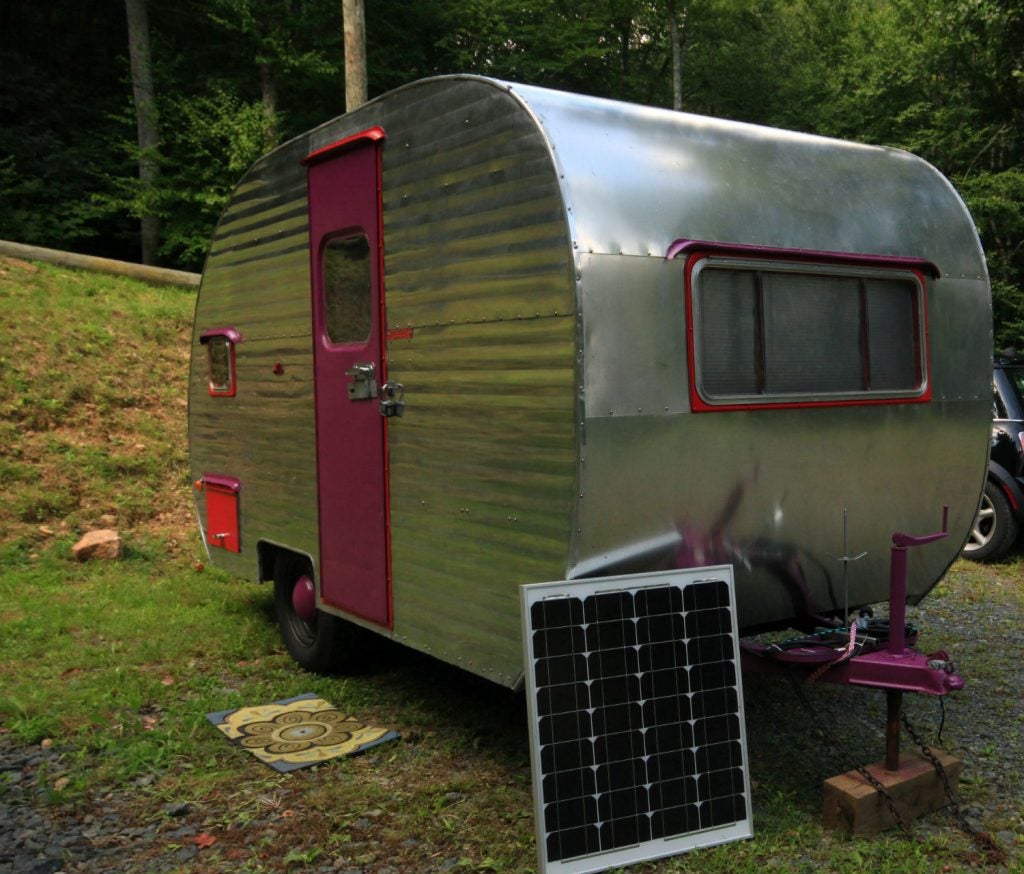
Shari and Hutch stay powered with a Renogy solar system.
We handle 99% of our “life stuff” online. For some people, this is obvious. Others still like to receive paper bills and pay with paper checks. When we left our permanent life in 2012, we could pay everything electronically. Upgrading to a smartphone in 2015 meant we could easily keep tabs on everything from bills, to accounts, to investments, from anywhere we have a signal.
We can even deposit checks from the front seat of our car. Although our goal is to be away from connectivity as much as possible, these tools really help.
If you aren’t an online bill payer now, start setting this up (bill by bill) so that it doesn’t feel overwhelming when you officially leave home base.
For stuff that has to be mailed physically, we use Shari’s parents’ address as our mailing address, so they just forward any important stuff to wherever we might be at that time. We’ve used friend’s homes, work addresses, and general delivery to a specific US Post Office to receive letters and packages as well. If this isn’t an option for you, check out some of the mail forwarding companies available to RV’ers. Some of your best options are Americas Mailbox, DakotaPost, and MyDakotaAddress.
Medical Insurance & First Aid Training
We have been much healthier since leaving our former lives. We attribute this to being more active, less stressed, and spending less time in classrooms with students.
However, when things come up, we’ve been grateful to have a plan that covers us from coast to coast. The Health Insurance Marketplace has some good options, but be sure to look over the details of each plan to make sure you’ll be covered wherever you go.
Most urgent care and emergency room visits are considered “in network,” but never assume; always check your plan’s details.
Also, if you are spending a good deal of time away from power and cell phone coverage, it’s a good idea to have some first aid knowledge. Consider attending a Wilderness First Aid (WFA) or Wilderness First Responder (WFR) course through NOLS or SOLO.
Preparing Your Rig
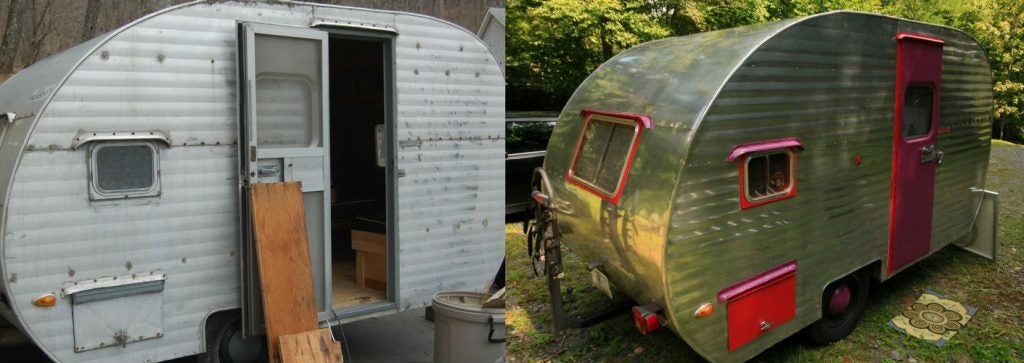
My father-in-law always says, “Perfect is the enemy of the good enough!”
The 1957 camper renovation threw a wild card into our timeline. We weren’t sure how long the remodel would take, but we were determined to upcycle this adorable little trailer into a home.
We had a whole lot to do on our rig – from rebuilding the bed and dining area to accommodate more storage, to making new drawers, to replacing 2 layers of cracked flooring and reskinning a portion of the outside and installing the entire solar-powered system.
We focused on what we needed to be dry and comfortable, with a heavy dose of cute thrown in.
Over five years later, we’re still living in our little home on wheels and loving it. We look back on the frenetic preparation time with fond memories, but also wonder, were we crazy?? We had no idea what we’d gotten ourselves into.
This is The Dyrt Magazine‘s first installment of Full-Time Campers. Come back next week for more stories and advice from full-time campers Shari and Hutch. You can read more about their life on the road at Freedom in a Can.
Full-Time Campers is powered by Renogy.

